Immunotherapy in cervical cancer: an innovative approach for better treatment outcomes
Cervical cancer remains a significant global health challenge, ranking as the fourth most common cancer among women. Persistent infection with high-risk human papillomavirus (HPV) is the primary eti
[...] Read more.
Cervical cancer remains a significant global health challenge, ranking as the fourth most common cancer among women. Persistent infection with high-risk human papillomavirus (HPV) is the primary etiological factor, leading to immune evasion mechanisms that promote tumor development and progression. Immunotherapy has emerged as a transformative approach in the management of cervical cancer, aiming to restore and enhance the body’s immune response against tumor cells. Checkpoint inhibitors targeting programmed death-1 (PD-1) and its ligand (PD-L1) have shown promising results in patients with advanced or recurrent cervical cancer. Pembrolizumab, a PD-1 inhibitor, has been approved for PD-L1-positive cervical cancer, demonstrating durable responses. However, low response rates necessitate exploration of combination strategies. Trials are underway combining checkpoint inhibitors with chemotherapy, radiation, or other immunotherapeutic agents to enhance efficacy. Therapeutic vaccines targeting HPV antigens, such as E6 and E7 oncoproteins, are also a focus of active research. These vaccines aim to elicit robust cytotoxic T-cell responses, offering a potential strategy for early intervention and disease control. Adoptive T-cell therapies, including engineered T-cell receptor (TCR) and chimeric antigen receptor (CAR)-T cells, represent cutting-edge advancements, though challenges with tumor heterogeneity and off-target effects persist. However, challenges such as limited response rates and immune evasion mechanisms remain. The tumor microenvironment (TME) in cervical cancer, characterized by immunosuppressive cells and cytokines, poses a significant barrier to effective immunotherapy. Emerging approaches targeting the TME, such as cytokine modulation, hold promise in overcoming resistance mechanisms. Key gaps include a lack of biomarkers for patient selection, insufficient understanding of TME dynamics, and suboptimal strategies for overcoming antigen heterogeneity and immune resistance. This review addresses these issues by providing a comprehensive analysis of the current landscape of cervical cancer immunotherapy, identifying critical barriers, and highlighting emerging approaches, such as combination therapies, novel immune targets, and strategies to modulate the TME, to guide future research and clinical practice.
Treshita Dey, Sushma Agrawal
View:614
Download:15
Times Cited: 0
Cervical cancer remains a significant global health challenge, ranking as the fourth most common cancer among women. Persistent infection with high-risk human papillomavirus (HPV) is the primary etiological factor, leading to immune evasion mechanisms that promote tumor development and progression. Immunotherapy has emerged as a transformative approach in the management of cervical cancer, aiming to restore and enhance the body’s immune response against tumor cells. Checkpoint inhibitors targeting programmed death-1 (PD-1) and its ligand (PD-L1) have shown promising results in patients with advanced or recurrent cervical cancer. Pembrolizumab, a PD-1 inhibitor, has been approved for PD-L1-positive cervical cancer, demonstrating durable responses. However, low response rates necessitate exploration of combination strategies. Trials are underway combining checkpoint inhibitors with chemotherapy, radiation, or other immunotherapeutic agents to enhance efficacy. Therapeutic vaccines targeting HPV antigens, such as E6 and E7 oncoproteins, are also a focus of active research. These vaccines aim to elicit robust cytotoxic T-cell responses, offering a potential strategy for early intervention and disease control. Adoptive T-cell therapies, including engineered T-cell receptor (TCR) and chimeric antigen receptor (CAR)-T cells, represent cutting-edge advancements, though challenges with tumor heterogeneity and off-target effects persist. However, challenges such as limited response rates and immune evasion mechanisms remain. The tumor microenvironment (TME) in cervical cancer, characterized by immunosuppressive cells and cytokines, poses a significant barrier to effective immunotherapy. Emerging approaches targeting the TME, such as cytokine modulation, hold promise in overcoming resistance mechanisms. Key gaps include a lack of biomarkers for patient selection, insufficient understanding of TME dynamics, and suboptimal strategies for overcoming antigen heterogeneity and immune resistance. This review addresses these issues by providing a comprehensive analysis of the current landscape of cervical cancer immunotherapy, identifying critical barriers, and highlighting emerging approaches, such as combination therapies, novel immune targets, and strategies to modulate the TME, to guide future research and clinical practice.
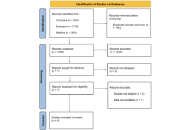 A systematic review and meta-analysis of phase III randomized controlled trials to assess the risk of pneumonia, URTIs, and VTE in multiple myeloma patients treated with isatuximabOpen AccessMeta-AnalysisBackground: Multiple myeloma (MM) is a hematologic malignancy characterized by the clonal proliferation of malignant plasma cells in the bone marrow, constituting approximately 13% of all hematol [...] Read more.Daniel Thomas Jones ... Thura Win HtutPublished: March 19, 2025 Explor Target Antitumor Ther. 2025;6:1002300
A systematic review and meta-analysis of phase III randomized controlled trials to assess the risk of pneumonia, URTIs, and VTE in multiple myeloma patients treated with isatuximabOpen AccessMeta-AnalysisBackground: Multiple myeloma (MM) is a hematologic malignancy characterized by the clonal proliferation of malignant plasma cells in the bone marrow, constituting approximately 13% of all hematol [...] Read more.Daniel Thomas Jones ... Thura Win HtutPublished: March 19, 2025 Explor Target Antitumor Ther. 2025;6:1002300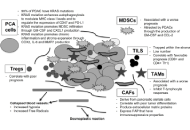 Pancreatic cancer: failures and hopes—a review of new promising treatment approachesOpen AccessReviewPancreatic cancer is a challenging disease with limited treatment options and a high mortality rate. Just few therapy advances have been made in recent years. Tumor microenvironment, immunosuppressi [...] Read more.Vittore Cereda, Mario Rosario D’AndreaPublished: March 18, 2025 Explor Target Antitumor Ther. 2025;6:1002299
Pancreatic cancer: failures and hopes—a review of new promising treatment approachesOpen AccessReviewPancreatic cancer is a challenging disease with limited treatment options and a high mortality rate. Just few therapy advances have been made in recent years. Tumor microenvironment, immunosuppressi [...] Read more.Vittore Cereda, Mario Rosario D’AndreaPublished: March 18, 2025 Explor Target Antitumor Ther. 2025;6:1002299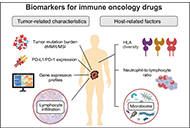 Overview on biomarkers for immune oncology drugsOpen AccessReviewAlthough immune checkpoint inhibitors (ICIs) are widely used in clinical oncology, less than half of treated cancer patients derive benefit from this therapy. Both tumor- and host-related variables [...] Read more.Evgeny N. Imyanitov ... Natalia V. MitiushkinaPublished: March 17, 2025 Explor Target Antitumor Ther. 2025;6:1002298
Overview on biomarkers for immune oncology drugsOpen AccessReviewAlthough immune checkpoint inhibitors (ICIs) are widely used in clinical oncology, less than half of treated cancer patients derive benefit from this therapy. Both tumor- and host-related variables [...] Read more.Evgeny N. Imyanitov ... Natalia V. MitiushkinaPublished: March 17, 2025 Explor Target Antitumor Ther. 2025;6:1002298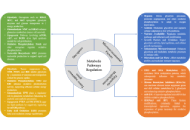 Metabolic mechanisms of immunotherapy resistanceOpen AccessReviewImmunotherapy has revolutionized cancer treatment, yet its efficacy is frequently compromised by metabolic mechanisms that drive resistance. Understanding how tumor metabolism shapes the immune micr [...] Read more.Luis Cabezón-Gutiérrez ... Vilma Pacheco-BarciaPublished: March 13, 2025 Explor Target Antitumor Ther. 2025;6:1002297
Metabolic mechanisms of immunotherapy resistanceOpen AccessReviewImmunotherapy has revolutionized cancer treatment, yet its efficacy is frequently compromised by metabolic mechanisms that drive resistance. Understanding how tumor metabolism shapes the immune micr [...] Read more.Luis Cabezón-Gutiérrez ... Vilma Pacheco-BarciaPublished: March 13, 2025 Explor Target Antitumor Ther. 2025;6:1002297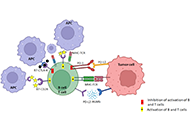 Immunotherapy in cervical cancer: an innovative approach for better treatment outcomesOpen AccessReviewCervical cancer remains a significant global health challenge, ranking as the fourth most common cancer among women. Persistent infection with high-risk human papillomavirus (HPV) is the primary eti [...] Read more.Treshita Dey, Sushma AgrawalPublished: March 02, 2025 Explor Target Antitumor Ther. 2025;6:1002296
Immunotherapy in cervical cancer: an innovative approach for better treatment outcomesOpen AccessReviewCervical cancer remains a significant global health challenge, ranking as the fourth most common cancer among women. Persistent infection with high-risk human papillomavirus (HPV) is the primary eti [...] Read more.Treshita Dey, Sushma AgrawalPublished: March 02, 2025 Explor Target Antitumor Ther. 2025;6:1002296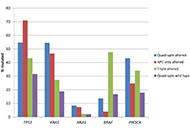 Genomic alterations in the WNT/β-catenin pathway and resistance of colorectal cancer cells to pathway-targeting therapiesOpen AccessOriginal ArticleAim: Colorectal cancer is the most prevalent gastrointestinal malignancy with limited therapeutic options in the metastatic setting. The WNT/β-catenin/adenomatous polyposis coli (APC) pathway is [...] Read more.Ioannis A. VoutsadakisPublished: February 25, 2025 Explor Target Antitumor Ther. 2025;6:1002295
Genomic alterations in the WNT/β-catenin pathway and resistance of colorectal cancer cells to pathway-targeting therapiesOpen AccessOriginal ArticleAim: Colorectal cancer is the most prevalent gastrointestinal malignancy with limited therapeutic options in the metastatic setting. The WNT/β-catenin/adenomatous polyposis coli (APC) pathway is [...] Read more.Ioannis A. VoutsadakisPublished: February 25, 2025 Explor Target Antitumor Ther. 2025;6:1002295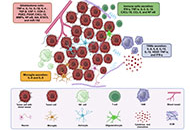 Unmasking the potential: mechanisms of neuroinflammatory modulation by oncolytic viruses in glioblastomaOpen AccessReviewGlioblastoma, an aggressive and lethal brain tumor, presents enormous clinical challenges, including molecular heterogeneity, high recurrence rates, resistance to conventional therapies, and limited [...] Read more.Narimene Beder ... Mehdi TotonchiPublished: February 24, 2025 Explor Target Antitumor Ther. 2025;6:1002294
Unmasking the potential: mechanisms of neuroinflammatory modulation by oncolytic viruses in glioblastomaOpen AccessReviewGlioblastoma, an aggressive and lethal brain tumor, presents enormous clinical challenges, including molecular heterogeneity, high recurrence rates, resistance to conventional therapies, and limited [...] Read more.Narimene Beder ... Mehdi TotonchiPublished: February 24, 2025 Explor Target Antitumor Ther. 2025;6:1002294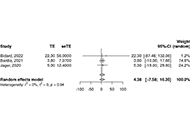 Elacestrant in hormone receptor-positive metastatic breast cancer: a post-hoc analysisOpen AccessMeta-AnalysisBackground: Breast cancer is a leading cause of mortality in women. Hormone therapy plays a crucial role in treatment of hormone receptor-positive metastatic breast cancer. Elacestrant is a selective estrogen receptor degrader (SE [...] Read more.Azza Sarfraz ... Khadija CheemaPublished: February 20, 2025 Explor Target Antitumor Ther. 2025;6:1002293
Elacestrant in hormone receptor-positive metastatic breast cancer: a post-hoc analysisOpen AccessMeta-AnalysisBackground: Breast cancer is a leading cause of mortality in women. Hormone therapy plays a crucial role in treatment of hormone receptor-positive metastatic breast cancer. Elacestrant is a selective estrogen receptor degrader (SE [...] Read more.Azza Sarfraz ... Khadija CheemaPublished: February 20, 2025 Explor Target Antitumor Ther. 2025;6:1002293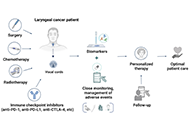 Releasing the brakes: the role of immune checkpoint inhibitors in laryngeal cancerOpen AccessReviewLaryngeal cancer, a subtype of head and neck cancer, poses significant challenges due to its profound impact on essential functions such as speech and swallowing and poor survival rates in advanced [...] Read more.Michail Athanasopoulos ... Nicholas S. MastronikolisPublished: February 17, 2025 Explor Target Antitumor Ther. 2025;6:1002292
Releasing the brakes: the role of immune checkpoint inhibitors in laryngeal cancerOpen AccessReviewLaryngeal cancer, a subtype of head and neck cancer, poses significant challenges due to its profound impact on essential functions such as speech and swallowing and poor survival rates in advanced [...] Read more.Michail Athanasopoulos ... Nicholas S. MastronikolisPublished: February 17, 2025 Explor Target Antitumor Ther. 2025;6:1002292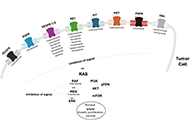 Multikinase and highly selective kinase inhibitors in the neoadjuvant treatment of patients with thyroid cancerOpen AccessReviewMultikinase inhibitors (MKIs) and highly selective tyrosine kinase inhibitors (HS-TKIs) positively impact the progression-free survival (PFS) of locally advanced and metastatic thyroid cancer cases. [...] Read more.Laura Valerio, Antonio MatronePublished: February 13, 2025 Explor Target Antitumor Ther. 2025;6:1002291
Multikinase and highly selective kinase inhibitors in the neoadjuvant treatment of patients with thyroid cancerOpen AccessReviewMultikinase inhibitors (MKIs) and highly selective tyrosine kinase inhibitors (HS-TKIs) positively impact the progression-free survival (PFS) of locally advanced and metastatic thyroid cancer cases. [...] Read more.Laura Valerio, Antonio MatronePublished: February 13, 2025 Explor Target Antitumor Ther. 2025;6:1002291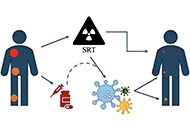 Non-targeted effects of stereotactic radiotherapy: a review of the evidence coming from the clinical fieldOpen AccessSystematic ReviewBackground: Preclinical animal studies have demonstrated that radiation treatment (RT) can induce effects beyond the anatomical site of irradiation. Non-targeted effects of RT (NTER) have been sp [...] Read more.Angela Barillaro ... Roberto PacelliPublished: February 13, 2025 Explor Target Antitumor Ther. 2025;6:1002290
Non-targeted effects of stereotactic radiotherapy: a review of the evidence coming from the clinical fieldOpen AccessSystematic ReviewBackground: Preclinical animal studies have demonstrated that radiation treatment (RT) can induce effects beyond the anatomical site of irradiation. Non-targeted effects of RT (NTER) have been sp [...] Read more.Angela Barillaro ... Roberto PacelliPublished: February 13, 2025 Explor Target Antitumor Ther. 2025;6:1002290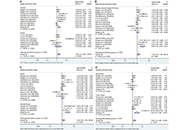 Shorter telomere length as a prognostic marker for survival and recurrence in breast cancer: a systematic review and meta-analysisOpen AccessMeta-AnalysisBackground: Telomere length is a potential prognostic biomarker in breast cancer, but its clinical utility remains uncertain due to inconsistent findings across the literature. This systematic re [...] Read more.Dhyas Munandar Arya Sasmita ... Sumadi Lukman AnwarPublished: February 13, 2025 Explor Target Antitumor Ther. 2025;6:1002289
Shorter telomere length as a prognostic marker for survival and recurrence in breast cancer: a systematic review and meta-analysisOpen AccessMeta-AnalysisBackground: Telomere length is a potential prognostic biomarker in breast cancer, but its clinical utility remains uncertain due to inconsistent findings across the literature. This systematic re [...] Read more.Dhyas Munandar Arya Sasmita ... Sumadi Lukman AnwarPublished: February 13, 2025 Explor Target Antitumor Ther. 2025;6:1002289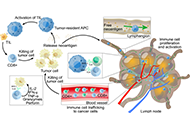 Neoantigen immunotherapy: a novel treatment for bladder cancerOpen AccessReviewBladder cancer is currently the most common malignant tumor of the urinary system. The traditional treatment methods for bladder cancer are mainly surgery, chemotherapy, radiotherapy, and targeted t [...] Read more.Ruiyang Lv ... Xuejian WangPublished: January 26, 2025 Explor Target Antitumor Ther. 2025;6:1002288
Neoantigen immunotherapy: a novel treatment for bladder cancerOpen AccessReviewBladder cancer is currently the most common malignant tumor of the urinary system. The traditional treatment methods for bladder cancer are mainly surgery, chemotherapy, radiotherapy, and targeted t [...] Read more.Ruiyang Lv ... Xuejian WangPublished: January 26, 2025 Explor Target Antitumor Ther. 2025;6:1002288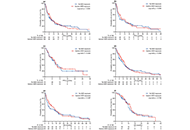 Concomitant exposure to benzodiazepines during pembrolizumab-based therapy for advanced non-small-cell lung cancer: a propensity-score matched analysis of monitoring agency dataOpen AccessOriginal ArticleAim: The interaction of concomitant benzodiazepine (BZD) exposure during immune checkpoint blockade has not been comprehensively investigated to date. This research aimed to determine the influen [...] Read more.Fabrizio Nelli ... Agnese FabbriPublished: January 20, 2025 Explor Target Antitumor Ther. 2025;6:1002287
Concomitant exposure to benzodiazepines during pembrolizumab-based therapy for advanced non-small-cell lung cancer: a propensity-score matched analysis of monitoring agency dataOpen AccessOriginal ArticleAim: The interaction of concomitant benzodiazepine (BZD) exposure during immune checkpoint blockade has not been comprehensively investigated to date. This research aimed to determine the influen [...] Read more.Fabrizio Nelli ... Agnese FabbriPublished: January 20, 2025 Explor Target Antitumor Ther. 2025;6:1002287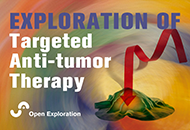 Implications of noncoding RNAs for cancer therapy: Are we aiming at the right targets?Open AccessPerspectiveThe discovery of oncogenes and tumor suppressor genes led to a better understanding of tumorigenesis, and prompted the development of molecularly targeted therapy. Over the past 30 years, many new d [...] Read more.Amil ShahPublished: January 16, 2025 Explor Target Antitumor Ther. 2025;6:1002286
Implications of noncoding RNAs for cancer therapy: Are we aiming at the right targets?Open AccessPerspectiveThe discovery of oncogenes and tumor suppressor genes led to a better understanding of tumorigenesis, and prompted the development of molecularly targeted therapy. Over the past 30 years, many new d [...] Read more.Amil ShahPublished: January 16, 2025 Explor Target Antitumor Ther. 2025;6:1002286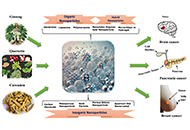 Herbal based nanoparticles as a possible and potential treatment of cancer: a reviewOpen AccessReviewCancer is the greatest cause of mortality worldwide. Various drug classes treat various cancers. Nanoformulations made from natural sources are being studied for treating several diseases, including [...] Read more.Roshan Yadav ... Tejpal YadavPublished: January 03, 2025 Explor Target Antitumor Ther. 2025;6:1002285
Herbal based nanoparticles as a possible and potential treatment of cancer: a reviewOpen AccessReviewCancer is the greatest cause of mortality worldwide. Various drug classes treat various cancers. Nanoformulations made from natural sources are being studied for treating several diseases, including [...] Read more.Roshan Yadav ... Tejpal YadavPublished: January 03, 2025 Explor Target Antitumor Ther. 2025;6:1002285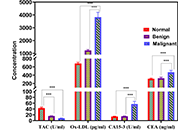 Assessment of lipid peroxidation and total antioxidant capacity in patients with breast cancerOpen AccessOriginal ArticleAim: Breast cancer (BC), a disease in which abnormal breast cells grow out of control and form tumors, is a prevalent life-threatening disease worldwide. Oxidative stress has been implicated in t [...] Read more.Abdullatif Taha Babakr, Mohamed Mahmoud Nour EldeinPublished: January 02, 2025 Explor Target Antitumor Ther. 2025;6:1002284
Assessment of lipid peroxidation and total antioxidant capacity in patients with breast cancerOpen AccessOriginal ArticleAim: Breast cancer (BC), a disease in which abnormal breast cells grow out of control and form tumors, is a prevalent life-threatening disease worldwide. Oxidative stress has been implicated in t [...] Read more.Abdullatif Taha Babakr, Mohamed Mahmoud Nour EldeinPublished: January 02, 2025 Explor Target Antitumor Ther. 2025;6:1002284